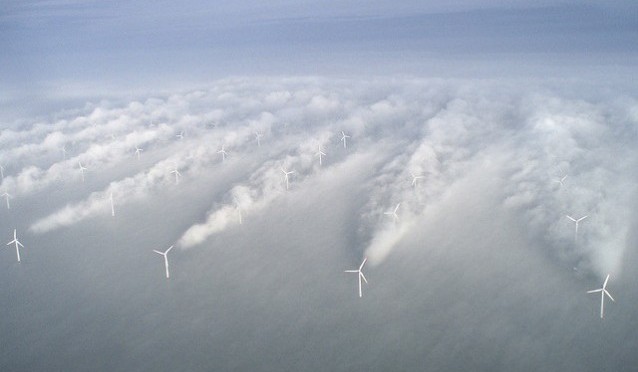9th July, 2015 was no ordinary day for Danish Wind energy association. A huge 140% of electricity demand of Denmark was met by a single domestic resource, wind! Naturally, it supplies 116% of demand when wind flows abundantly. Leaving huge surplus of electricity to meet demand of neighboring countries- Norway, Germany and Sweden.
These gleaming days were not so easy to find. Hardship and consistency of years after years reached the Danish in this place today. Era of wind energy was ushered by Paul La Cour, one of Denmark’s greatest inventors. He built a windmill to supply electricity in rural areas. To extract maximum efficiency from traditional windmill La Cour did the famous “wind tunnel” experiment. Using the outcomes of this experiment in 1899 he got double efficiency!
After 20 years of his death a new wind mill was built using his ideals and a four times efficiency was obtained. But unfortunately this project was not taken any far and like all other countries Denmark became dependent on imported oil, until oil crisis in 1973. When global oil crisis stirred up the world. The state, being unable to ship oil moved to coal power for electricity but that too brought them very bad reputation for emitting too much carbon di oxide.
It was a wake-up call for Denmark and in 1985 they firmly decided to avoid nuclear power plant crafting a smiling sun logo bearing the line “Nuclear power, no thanks”. So there was very little option left for them without going renewable especially with their firm determination to avoid nuclear power plant.
Then came the rise of another wind genius Henrik Stiesdal, technical director at Siemens wind power, who came up with red woody blades! It might sound weird that what a woody blade can do! But Stiesdal thought it might be the ticket to come out from the curse of energy deficiency. And he proved it! Taking loan from a desperate state, he along with a man from his town built the first economically feasible prototype of wind turbine using that red blade, following the principles established by La Cour, i.e. to produce a maximum of energy with a given wing area, the number of wings should be small, their bevel small and the speed of rotation fast.
He sold the license to Vestas, soon Vestas became one of the largest turbine exporters in the world. The speciality of Stiesdal’s wind turbine is that it is lighter than traditional one and hence has greater efficiency. So, their turbine did not take long to spread everywhere!
Then in 1981, with political patronage first windfarm was established. It was an onshore windfarm. Then came the first offshore windfarm in 1991. The reasons behind choosing offshore was that wind speed is much greater there than land. Another thrifty decision of Danes!
But still the feature was utterly frustrating. In 1999 only 1.7% electricity demand was met by gluts of wind tower. And they exported more than 84% of energy produced. Moreover, the government was subsidizing private companies at a rate of 30%! In 2003, 3.3% electricity was supported by wind. The government set a target of 10% by 2005.
Along with that, it is not easy to maintain a grid of renewable energy, which fluctuates extensively. When there is wind, supply becomes huge and at other time there is simply no supply. But with firm determination Denmark kept on walking appointing brilliant technicians. And yes! Success eventually came and continued to come increasingly.
In 2005 Danes installed wind capacity of 3,127 MW. In 2010 grew to 3,752 MW. Today, the Danes has highest proportion of wind power in the world!
Today Denmark gets 39% national electricity from wind! Now they have exported almost 50,000 wind turbines worldwide. And they have 9,000 turbines across the country. Moreover, government has reduced subsidy to zero percent!
There are even more, the Nordic nation has a total installed capacity of 3,871 MW, with 857.3 MW of that offshore at 13 offshore wind farms. Now the government is planning to get 50% share from wind by 2020 and 100% by 2050.
It is not that Denmark has the highest wind velocity. The perseverance of government, consistent energy policy, people’s support, good governance led them to this position today and made them confident of dreaming to go fully renewable!
http://dhakainsider.com





